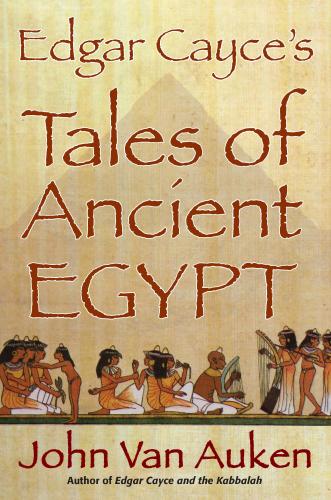Cayce’s root races are specifically about various body types used by human souls across the planet and through the ages. Cayce actually predicted that a new root-race body type is evolving and will manifest itself as we move into the next era or new age. This new body will have twelve chakras instead of the seven we currently have. It will be lighter, less dense, and more luminescent or radiant. There will also be radiance around all of us, an aura. These will become more prominent as the new body type becomes the norm.
We need to also keep in mind that Cayce stated that the early body types used by incoming souls were not as physical as our bodies today. He predicted that we will regain some of these characteristics and qualities as we evolve into the next root-race body type.
The Changing Population of Egypt
The population of Egypt today is not composed of the descendants of the ancient Egyptians. The Egypt that Cayce was speaking of is long gone and has been for millennia. Many peoples have invaded and occupied Egypt since those very ancient times of Cayce’s tales. Here are some highlights: the Arabs invaded in AD 642 and continue to be the primary population in Egypt today; the Romans invaded in 47 BC but never really became part of the population; the Greeks invaded in 332 BC and did become a significant portion of the population, adopting many Egyptian traditions and religious practices; the Nubian conquest of Egypt occurred in 1000 BC, which may have been the reason that Greek historians reported Egyptians to be “very black” with “woolly hair”; the Hittites invaded in 1590 BC, introducing horses and lightweight, fast chariots to the culture (we often think that the chariots in Egyptian depictions were an Egyptian invention, not so), and the Hyksos invaded in 1750 BC. Cayce’s tales are about an Egyptian population dating back to 11,000 BC! The present people of Egypt are not the ancient Egyptians. However, the souls of the ancient Egyptians have been and are continuing to reincarnate and may be among any of the populations of today.
The Second Creation Period
Because water is so essential to sustaining life on this planet, the first agricultural centers of the Second Creation were founded in the regions of the four great rivers on this planet: the Tigris and Euphrates Rivers (Mesopotamia), the Indus and Ganges Rivers (India), the Huang He (the Yellow River in China), and the Nile (Egypt). The Amazon is not included because no great civilization developed along it—simply too harsh an environment and the rainforest created marshy soil. Using Cayce’s timeline, the period roughly from 22,000 to 12,000 BC was the quiet aftermath of the catastrophic ending of the First Creation. The period beginning in 12,000 to 11,000 BC was the beginning of the Second Creation and the world as we know it today.
The Nile
The Greek historian Herodotus wrote, “Egypt was the gift of the Nile.” Three tributaries created this amazing river. The first is the White Nile, a long gentle river flowing from Lake Victoria—a high mountain lake bordered by Kenya, Tanzania, and Uganda. This tributary joins with the shorter but more voluminous and nutrient-richer Blue Nile, springing from Lake Tana in Ethiopia. And in ancient times, a third tributary joined these two, the Yellow Nile flowing from the eastern highlands of Chad. The Yellow Nile is now dry but was once a part of this trinity of rivers creating the ancient Nile.
Each year during the rainy season, the ancient Nile River would overflow its banks and inundate Egypt; as it retreated, it left behind nutrient-rich black silt that made Egypt one of the most fertile lands in recorded history. Today, two dams now control the Nile—there is no flooding and no rich silt fertilizer.
Around this river of life-giving water grew one of the greatest cultures on the planet. The ancient Egyptians called the river Iteru, meaning “Great River”; the modern name comes from the Greek Neilos (Nilus in Latin), transliterated to Nile.
The Edfu Text, found in the Horus Temple in Edfu, and the Papyrus of Hunefer tell the story of a “hill people” who became the first settlers in this region. “We came from the beginning of the Nile where god Hapi dwells at the foothills of the Mountains of the Moon.” The Mountains of the Moon are likely those that contain Lake Tana in ancient Abyssinia (modern day Ethiopia), the origin of the Blue Nile. This name may be traced back to a Greek ruler of late Egypt, Ptolemy, and the use of the name “Mountains of Selene,” the moon goddess of the Greeks.
Cayce’s readings confirm the idea that hill people first came down out of the mountains along the Nile into the lower lands of Egypt today from ancient Abyssinia (Ethiopia). He also tells of the ancient lands of Nubia and their role in early Egypt. Nubia means “Land of Gold,” and much of the gold in Egypt came from the Nubian mountains. Much of Nubia today is under Lake Nasser, a result of the high dam, but portions remain in southern Egypt and northern Sudan. Upper Egypt is the mountain areas from Kom Ombo to Sudan. Lower Egypt is the delta region opening to the Mediterranean Sea.
Конец ознакомительного фрагмента.
Текст предоставлен ООО «ЛитРес».
Прочитайте эту книгу целиком, купив полную легальную версию на ЛитРес.
Безопасно оплатить книгу можно банковской картой Visa, MasterCard, Maestro, со счета мобильного телефона, с платежного терминала, в салоне МТС или Связной, через PayPal, WebMoney, Яндекс.Деньги, QIWI Кошелек, бонусными картами или другим удобным Вам способом.
